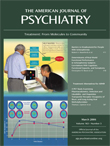Offender Profiling: An Introduction to the Sociopsychological Analysis of Violent Crime
Humans have always had a fascination with the concept of profiling criminals. At once both exciting and controversial, the profiling of criminal minds has entered our collective consciousness by routes as disparate as the heightened airport security following 9/11 and, more innocuously, the content of popular programs such as CSI and Criminal Minds. In fact, history is full of examples that attest to the intriguing nature of profiling.
It is fitting, then, that the beginning of Offender Profiling is peppered with literary and historical allusions that reflect the subject’s long-standing cultural significance. The introduction by Ralph Slovenko, the series editor, is alone worth the price of the book. Slovenko carefully distinguishes between indiscriminate profiling, which is all too often founded on stereotypes and prejudices, and crime scene perpetrator profiling founded on behavioral science and decision-making rules of thumb. The latter are more in the tradition of the best of the DSM-IV rules of thumb: e.g. “Simple Heuristics That Make Us Smart” (1).
The authors note that despite such interest in profiling methods, there is a surprising lack of scientific evidence with which to assess its validity, and they argue for the need to place profiling into a theoretical model in order to justify its purported effectiveness. The scope of the book thus includes both an examination of the theory and practice of profiling as well as an evaluation of its most commonly used forms.
Part I of the book examines the psychosocial substrate of criminal profiling. This includes psychological testing, psychopathologic typologies in literature, and areas of personality development relevant to crime. Following this, the authors review the psychological features common in violent criminals. This entails a discussion of personality traits such as impulsivity, frustration, sadism, and aggressiveness, and an overview of both personality and psychotic disorders. Next, the authors discuss socio-criminological perspectives on violent criminals, including both theories of criminality and offender typologies. They round out this section with a brief overview of violent crimes and criminals, offering epidemiological data that are used to construct various models of offender typologies.
The authors devote the second part of the book to the crime scene. They begin by describing the methodology of crime scene investigators, which sets the framework for an examination of crime scene “staging” by criminals who seek to escape detection. This allows the authors to make a strong case for the notion that the attributes of a crime scene, staged or not, can yield valuable information regarding the possible motivations of criminals, and are integral to the profiling process.
The final part of the book details the main approaches to profiling used today. The merits of profiling techniques such as “Criminal Investigative Analysis,” “Investigative Psychology,” and “Crime Action Profiling” are discussed here. Importantly, the authors do not hesitate to scrutinize the evidence concerning each technique’s efficacy, and quite often the results suggest that there is minimal serious scientific research with regard to profiling. The authors conclude that if profiling is to gain greater acceptance among the scientific community, those practicing it must be willing to assess its value more rigorously in an evidence-based sense.
Overall, Offender Profiling offers a thorough, easy-to-read introduction to the art of profiling. The authors themselves concede that this vocation is indeed something of an art, as it has yet to be truly integrated into a theoretical model and tested in research trials. Despite this, profiling is used widely, and its status as a legitimate practice is largely undisputed, warranting a close study. Additionally, profiling methods offer us further insight into how to understand such fundamental themes in psychiatry as the classification of human behaviors and motives. Thus, one does not have to be a forensic psychiatrist to enjoy and learn from what the authors have so thoughtfully composed here, as students of decision making in psychiatry would do worse than to read not only Sherlock Holmes but also the work of his modern successors. For the uninitiated, then, this book both recaps the origins of profiling and provides an objective overview of the most important recent developments in this always intriguing and always provocative field.
We hope that the authors’ next book will address the “blind-spots of profilers.” For example, the most common reason why profilers fail is that they cannot imagine the unimaginable. The Russian profilers who failed to imagine that a good, upstanding member of the Communist Party could be a serial killer, which would be inconsistent with their self-righteous presuppositions, exhibited the common pitfall of a failure of availability due to anchoring the profile on an initial impression. Be it in interpreting DSM-IV in the courtroom or in consulting with law enforcement to build offender profiles, forensic neuropsychiatric experts will use generally accepted rules of thumb or heuristics to facilitate clinical judgements. To be valid and reliable, use of heuristics in the criminal justice system as in clinical practice needs to be mindful of common yet avoidable pitfalls. Whereas the clinical dictum of “if one hears hoof beats don’t think of Zebras” is apt in conventional settings, one need only travel to the “jungle” that comprises the bizarre minds of serious killers to understand how a simple heuristic that can make us smart can also make us blind (2).
1. Gerd G, Todd PM, ABC Research Group: Simple Heuristics That Make Us Smart. New York, Oxford University Press, 2000Google Scholar
2. Bursztajn HJ, Feinbloom RI, Hamm RM, Brodsky A: Medical Choices, Medical Chances: How Patients, Families, and Physicians Can Cope With Uncertainty. New York, Routledge, 1990Google Scholar



